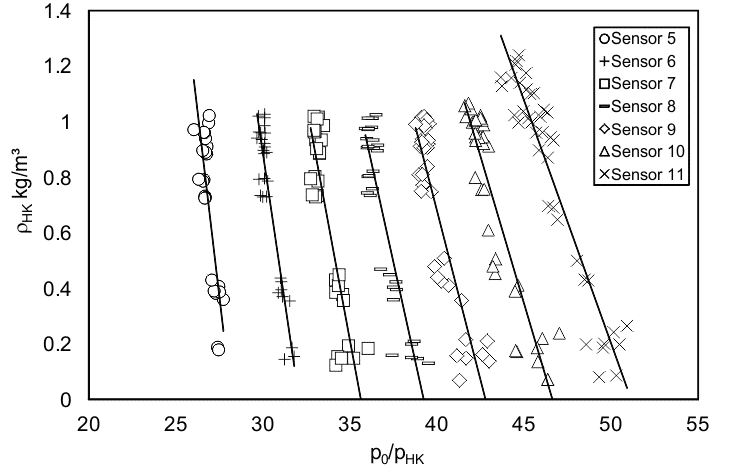
 1. Introduction
1. Introduction
The flow within a convergent-divergent rocket nozzle can be overexpanded only to a certain point. Under strongly overexpansion the boundary layer lifts off the nozzle wall and ambient air is sucked into the remaining separated backflow section of the nozzle. For a given nozzle geometry, the position of the flow separation is a function of the gas properties, the total and the ambient pressure. The flow separation leads to undesired side loads stressing the nozzle itself, the rocket engine, the rocket structure and the payload. The knowledge of the separation position is crucial for rocket engine design and determines the maximum possible nozzle length, a deciding factor for the engine performance. Whereas the separation behavior at sea-level can be experimentally studied in a realistic way, the altitude operation for a comparable nozzle pressure ratio p0/pa must be achieved in ground testing facilities by increasing the total pressure p0. But, this procedure disregards the ambient density decrease of an ascending rocket. Therefor the study of conventional nozzles that are foreseen to be started in high altitude or altitude adaptive rocket nozzles, like the dual bell nozzle regarding its transition behavior, can lead to inadequate results. The presented work studies experimentally the influence of the ambient density on the flow separation behavior of conventional nozzles. The results also lead to a direct conclusion regarding the transition prediction of dual bell nozzles.
2. Results and discussion
The flow separation position inside the supersonic part of a rocket nozzle was determined using wall pressure measurements. With decreasing ambient density the respective wall pressure measurement position can only be reached with an increased nozzle pressure ratio p0/pHK (fig. 1). Thereby the ratio of density decrease and nozzle pressure ratio increase is nearly linear. If the considered wall pressure measurement position lies further downstream the gradient of the approximated linear slope increases. The determined gradients can be related with the corresponding wall Mach numbers of each measurement position (fig. 2).
Figure 1, Flow separation as a function of pressure ratio and ambient density.
Figure 2, Separation shift gradient.
With decreasing ambient density, means in real case with increasing flight altitude, the flow separation moves upstream. This effect is enforced with an increasing wall Mach number and influences therefore directly the comparison of dual bell nozzles transitions under sea-level and real flight conditions.

